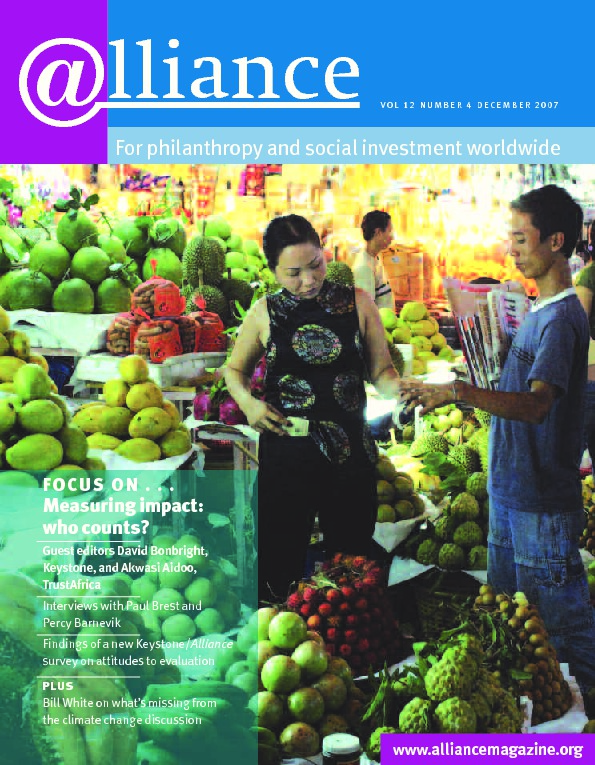Market-based approaches, which can sustainably provide needed goods and services once donor dollars have dried up, must be a part of the solution to the problems of poverty. However, building new models that provide such goods and services at affordable prices – in the face of high transaction costs, poor distribution systems, dispersed customers, limited financing options and, often, corruption – requires imaginative business solutions and partnerships supported by investors willing to take risks that traditional financiers will not take.
Acumen Fund is prepared to take those risks. Its goal is to transform the development paradigm from a top-down approach to one that recognizes the value of low-income people as customers who want to make active decisions to improve their own lives. We aim to build financially sustainable and scalable organizations that deliver critical goods and services that are affordable to the 4 billion people living on less than $4 a day – the bottom of the pyramid. Our principal means is investment of typically around $1 million in businesses (for-profit or non-profit) in the fields of health, water, housing and energy. We look for organizations with a few years of operations, an established business model with real revenues, and ambitions to scale.
We also invest in knowledge and talent, seeking to build, through our Fellows programme, a pool of people dedicated to serving the poor in the developing world who have the business, operational and professional skills to effect change.
Measuring what we achieve
We assess our investments along four criteria:
Financial sustainability Are the enterprises we fund in good financial health? Can they return our capital? Have they been able to tap into commercial capital markets?
Social impact How many lives have been affected by our investments, and how have they been affected (for instance, the number of farmers using drip irrigation systems and the degree to which their productivity has increased)? We opportunistically partner with world-class research organizations to conduct in-depth research to better understand the social impact of select investments.
Scale What progress is made towards scaling the organization, and how is that scale helping address the problem?
Cost effectiveness Can another organization deliver the same product or service more cost-effectively? To determine this, we have developed the Best Available Charitable Option (BACO) method. By comparing each of our investments with a real or hypothetical charitable option, we have begun to quantify how our social impact, for each net dollar invested, compares with that of other philanthropic options. Though it has limitations, this calculation allows us to understand the opportunity cost of our charitable capital, and make informed investment decisions that deliver the greatest social impact.
We expect quarterly financial, operational and social impact metrics from each enterprise. We then complete our evaluation framework with a Capability Assessment by our portfolio team that gives a broader qualitative snapshot of the health of the enterprise’s management team, its organizational systems, its continuing fit with Acumen Fund’s mission, and its potential for financial sustainability and scale.
With Google’s support, we have built a web-based tool to share reliable and up-to-date portfolio performance data across our four international offices. We can analyse this data to identify cross-cutting principles and to explore and communicate insights into how to bring the marketplace to the bottom of the pyramid.
We apply the same metrics-driven approach to managing our operational performance. Is Acumen Fund performing as efficiently as possible? Are we tracking our performance carefully and planning our growth accordingly? We use a balanced scorecard to track both our operating efficiency and our progress towards achieving our investment, knowledge and talent goals.
Measuring social investment is difficult. How can we quantify intangible social benefits such as better health or dignity? How do we come up with a standard metric that measures the success of a social investment and allows us to compare investments? How do we do it in a cost-effective way? Ultimately, the measures of our success will be other organizations and entrepreneurs replicating our models to serve more of the world’s poor, as well as increased flows of capital to market-based approaches to fighting poverty.
Raman Nanda is Director of Portfolio Management, Acumen Fund. Email rnanda@acumenfund.org
For more information
http://www.acumenfund.org
See p45 for Perla Ni’s comments on the five different approaches to evaluation outlined in the series of articles on pp40-44





Comments (0)